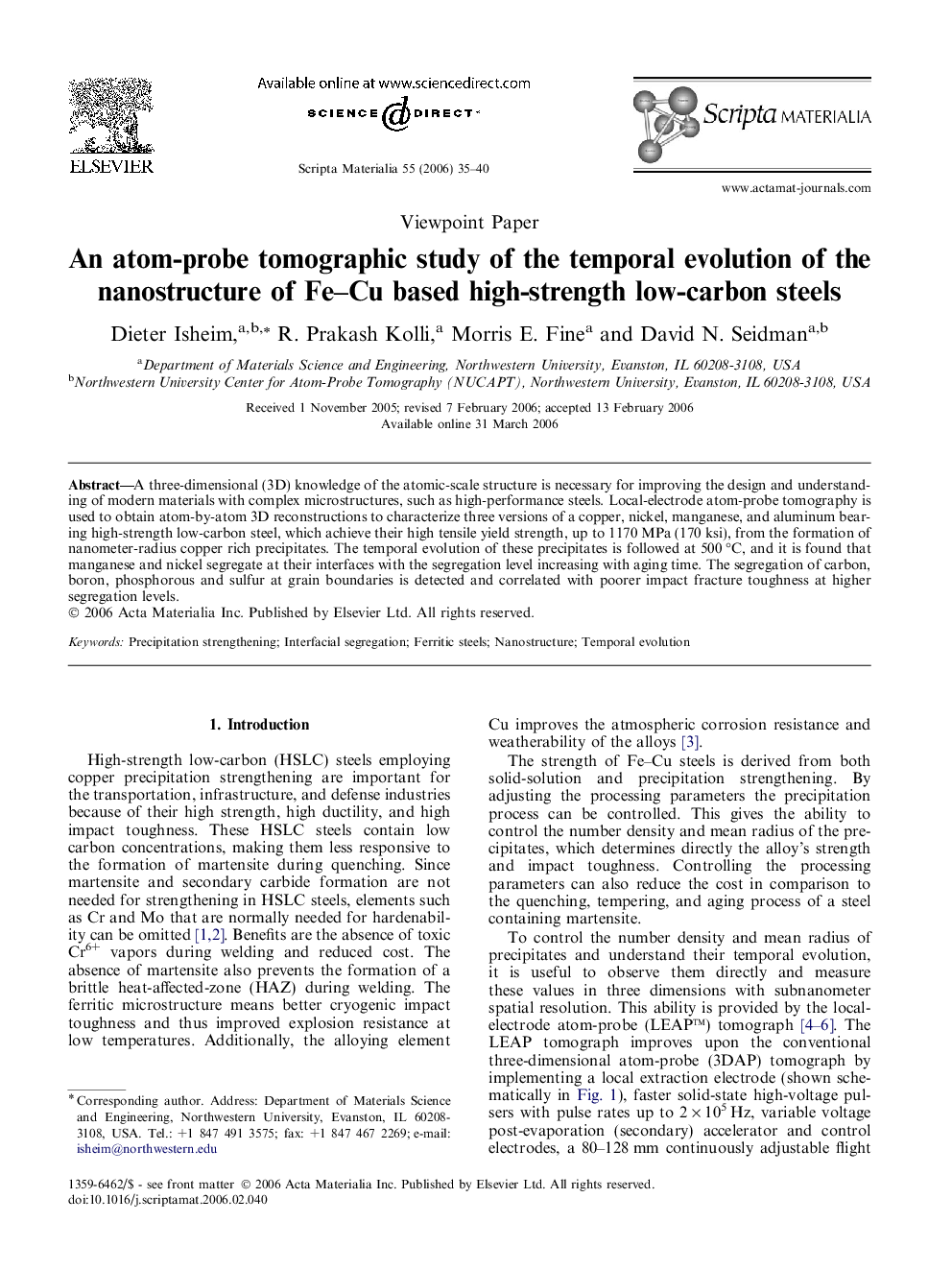| Article ID | Journal | Published Year | Pages | File Type |
|---|---|---|---|---|
| 1503695 | Scripta Materialia | 2006 | 6 Pages |
A three-dimensional (3D) knowledge of the atomic-scale structure is necessary for improving the design and understanding of modern materials with complex microstructures, such as high-performance steels. Local-electrode atom-probe tomography is used to obtain atom-by-atom 3D reconstructions to characterize three versions of a copper, nickel, manganese, and aluminum bearing high-strength low-carbon steel, which achieve their high tensile yield strength, up to 1170 MPa (170 ksi), from the formation of nanometer-radius copper rich precipitates. The temporal evolution of these precipitates is followed at 500 °C, and it is found that manganese and nickel segregate at their interfaces with the segregation level increasing with aging time. The segregation of carbon, boron, phosphorous and sulfur at grain boundaries is detected and correlated with poorer impact fracture toughness at higher segregation levels.
